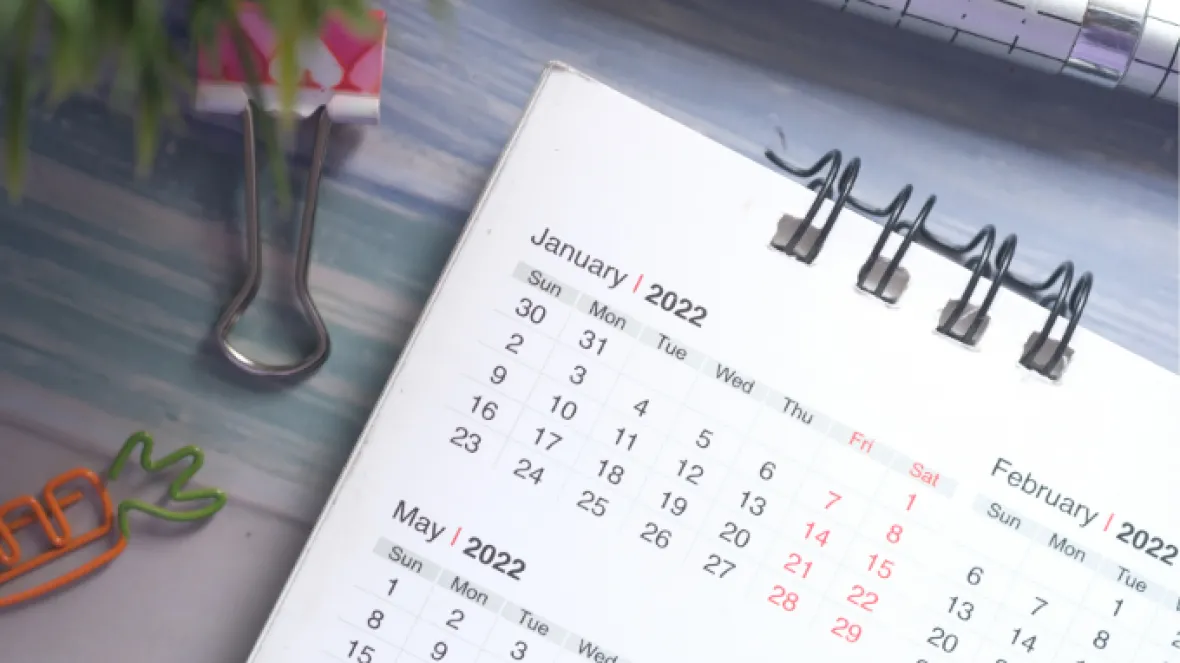
Welcome to 2022. Much like the COVID-19 pandemic over the past two years, there’s still a lot of uncertainty surrounding the future of key health care policies. However, there are some significant changes that are effective starting January 1, 2022, and other changes becoming effective later in the year.
Here’s what health insurance carriers and self-insured plans need to know now, and what carriers and plans must pay attention to in the coming months.
The Federal Surprise Billing Requirements Start Now
The Payment Process
The new Federal surprise billing requirements we talked about all last year are finally effective (as of January 3). BUT, we really won’t know how things will start playing out until some time in March or April. Why?
Because the Federal surprise billing requirements establish a “payment process” that first, gives an insurance carrier or self-insured plan 30 “calendar days” to decide – once they receive a bill from a provider – whether (1) to make an Initial Payment to the provider or (2) to deny the claim.
Then, a 30 “business day” period may begin if the provider wants to enter into an “open negotiation” with the carrier or plan to negotiate a final payment amount. This 30-business day period must be exhausted before a provider can even take the carrier/plan to arbitration. In other words, if the provider and the carrier/plan CANNOT come to an agreement on a final payment amount by the time this 30-business day negotiation period ends, then – and ONLY then – may the provider take the carrier/plan to arbitration.
Then, once the arbitration process is initiated, a Federal arbiter must be selected. Once the Federal arbiter is selected, the arbiter must make a final payment determination within 30 business days of the selection.
Based on this process, we’re all the way into March or April before we will have a sense of whether these rules are working as intended.
The Lawsuits
To date, four lawsuits have been filed against the Federal regulations implementing the Federally-developed arbitration process. Based on court schedules, we won’t know how the courts might rule until March at the earliest.
Whichever way the courts rule, the losing party will likely appeal the decision. Ultimately, these cases may wind up in the Supreme Court. If the Supreme Court gets involved, we won’t get a final, final decision until some time in 2023.
The Future
Having said all of that, it’s important to know this: Despite the uncertainty of how the rules may work in practice – and also, the uncertainty associated with the pending lawsuits – the Biden Administration will look to finalize the surprise billing implementing regulations sometime in the second or third quarter of 2022.
It’s unclear whether – and to what extent – the Administration will change the current regulations. We would expect that there will be some changes to smooth out how these rules should work in practice, but it’s unlikely that there will be full-scale changes to the rules we have now come to know.
Transparency In Coverage Regulations
Another set of rules that we have now come to know are the Transparency In Coverage (TiC) requirements, which were issued as a final regulation back in October 2020. These requirements, however, have NOT yet taken effect.
Publicly Disclosing In-Network Rates and Out-of-Network Allowed Amounts
For example, the requirement to publicly disclose a carrier’s and plan’s in-network rates, as well as their out-of-network allowed amounts, are NOT effective until July 1, 2022. At this point, there is NO reason to think that this effective date will get pushed back, so it’s important that carriers and plans continue to take the necessary steps to comply with these disclosure requirements by July 1.
Publicly Disclosing Prescription Drug Prices
The final TiC regulations also require carriers and plans to publicly disclose prescription drug-related prices on a public website. HOWEVER, this requirement was postponed by the Biden Administration until the Federal Departments issue future guidance saying (1) that these rules must now go into effect, or (2) that the Administration is going back to the drawing board and these rules are now rescinded. At this point, it’s difficult to predict where the Administration is going to go on this particular disclosure requirement, but there’s a good chance that these rules get pulled.
Cost-Sharing Liability Tool
Lastly, the TiC regulations also directed carriers and plans to create an online cost-sharing liability tool that participants can use to request their out-of-pocket exposure for specific medical items or services in real time. This cost-sharing liability tool requirement is NOT effective until January 1, 2023 and also January 1, 2024. BUT, as we move through 2022, carriers and plans must continue to take steps to comply with this new requirement (because we do NOT expect any delays to these effective dates).
The “Other” Provisions of the No Surprises Act
Back in August 2021, the Biden Administration issued guidance explaining that it’s unlikely that the Federal Departments will issue regulations implementing specific provisions of the No Surprises Act until sometime in 2022. The problem here was that most of these provisions became effective January 1, 2022, which prompted the question: How can insurance carriers, self-insured plans and medical providers comply with these new requirements if they do NOT have implementing guidance?
Good Faith Compliance
In this August 2021 guidance, the Administration answered this question by announcing: Until implementing regulations are released, carriers and plans will be deemed to be in compliance with the following new provisions by taking a “good faith and reasonable interpretation” of the statute:
-
Updating and improving provider directories
-
Disclosing in-network and out-of-network deductibles and out-of-pocket limits on insurance ID cards
-
Furnishing a Notice of Continuity of Care
Non-Enforcement
Also back in August 2021, the Biden Administration announced that the Federal Departments will NOT enforce the following provisions until future Departmental guidance is issued:
-
The No Surprises Act’s price comparison tool (compliance will likely be combined with the TiC cost-sharing liability tool in 2023)
-
The requirement that medical providers send to a participant – along with the carrier and plan – a “good faith” estimate of the cost of medical items or services scheduled in advance
-
The Advanced Explanation of Benefits (AEOB) requirement
-
Sending prescription drug-related information to the Federal government before December 27, 2022 and June 1, 2023
Effective Now
Lastly, there are two specific provisions of the No Surprises Act that are effective now:
-
The non-quantitative treatment limitations (NQTLs) “comparative analysis” (which is currently being enforced by both State and Federal regulators); and
-
The prohibition against adding “gag clauses” in contracts between carriers/plans and medical providers/owners of provider networks that would otherwise prevent the sharing of medical prices and claims information with the carriers/plans (which is “self-executing”, meaning carriers and plans can demand that any such contractual “gag clauses” be removed, and the provider/owner of a provider network must remove the “gag clauses” upon request).
The Future
All of this means that – throughout the course of 2022 – health insurance carriers and self-insured plan must be on the lookout for Federal guidance implementing these “other” provisions of the No Surprises Act, at which time, we will finally have more detail on how these provisions will be implemented and enforced.
Build Back Better Act
Efforts to enact the Biden Administration’s “Soft Infrastructure” Package (known as the Build Back Better Act (BBBA)) by the end of 2021 ultimately failed, culminating in an announcement on January 4 that a vote on the BBBA won’t happen until March 2022 (if at all).
The BBBA is kind of a big deal because it includes a number of provisions intended to help consumers purchasing health coverage in the “individual” market, both “on” the Exchange and “off” the Exchange.
On-Exchange
In particular, the BBBA would:
-
Extend through 2025 the “enhanced premium subsidies” that were enacted through the American Rescue Plan (as we have reported, under the American Rescue Plan (1) the ACA premium subsidy amounts were increased and (2) consumers at any income level could access a premium subsidy for the time (even those individuals and families above 400% of the Federal poverty level))
-
Allow through 2025, individuals and families in non-Medicaid expansion States to access an ACA premium subsidy for the first time (these individuals and families currently fall into the “coverage gap” and have NO access to health coverage)
-
Reduce, through 2025, the “affordability” test from 9.61% of income (for 2022) to 8.5% of income (which would make it easier for employees to access a premium subsidy if they purchased an Exchange plan)
-
Eliminate the “employer firewall” for employees with income below 138% of FPL and fix the “family glitch” for spouses and dependents of these low-income employees, through 2025 (note, the employer mandate penalty tax would also be temporarily “turned off” if these low-income employees access a premium subsidy)
The Congressional Budget Office (CBO) has told us that enacting the above noted provisions could add three to four million more new consumers to the ACA Exchange markets.
Off-Exchange
For those purchasing an “individual” market plan outside of an ACA Exchange, the BBBA would also make available $10 billion in each year of 2023, 2024, and 2025 for State-based Reinsurance Programs for the “individual” market to reduce the premiums for these plans.
Will Some Version of the BBBA Get Enacted?
Currently, it is unclear whether the BBBA will ever get enacted. One possible scenario is that we see a “skinny” version of the BBBA that will only include climate change reforms, extensions of the “enhanced premium subsidies,” and likely childcare funding and funding for free pre-K, along with drug pricing reforms (discussed below). We will NOT see things like paid family leave, adding hearing coverage to traditional Medicare, the extension of the Child Tax, or expanding the State and Local Tax (SALT) deduction, just to name a few.
Drug Pricing Reforms
As noted above, if some form of the BBBA is enacted, it will include the following drug pricing reforms:
-
Among the 50 prescription drugs that Medicare Parts B and D spend the most money on, HHS would be directed to negotiate the prices of up to 10 prescription drugs (starting in 2025), growing to up to 20 prescription drugs (in 2028 and future years), that – in the opinion of the Secretary of HHS – lack price competition.
-
A $2,000 per beneficiary out-of-pocket maximum limit would be added to Medicare Part D, plus other Part D “re-designs.”
-
If the prices of drugs covered by Medicare Parts B and D – along with the prices of drugs covered by “individual” AND “group” market health plans – increase faster than inflation, drug makers MUST pay the above-inflation amount back to Medicare’s Trust Fund or face penalties.
Importantly, if BBBA is NOT enacted into law, we should fully expect that the Biden Administration will seek to issue regulations over the course of 2022, 2023, and 2024 as a way to lower prescription drug costs. While the Administration does NOT have the authority to allow HHS to negotiate drug prices (only an act of Congress could make this change), HHS could issue regulations placing specific price controls on the prescription drugs covered under Medicare and Medicaid.
Keep up with the latest health care policy and industry news through our resource center.
